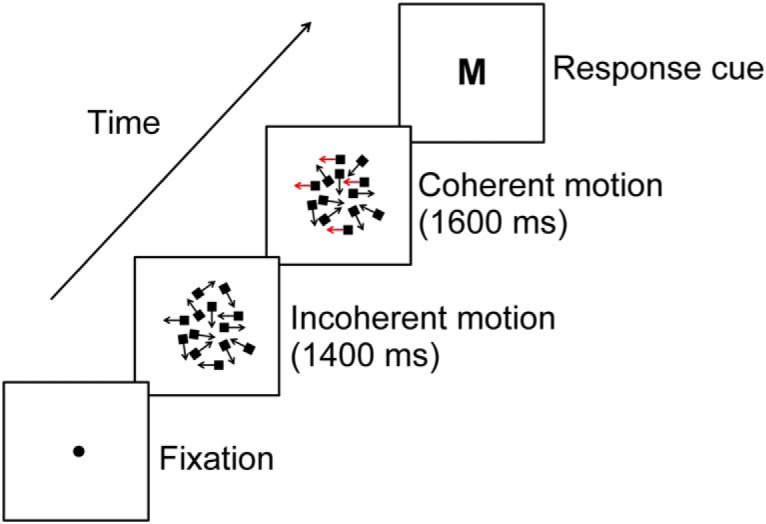Figure 1.

Schematic of the delayed response random dot motion task. In the No S-E condition, participants were instructed to ignore the kinetogram and make a speeded left or right hand button press solely on the basis of the response cue. In the Varied S-E condition, the stimulus–response association was withheld until the appearance of the response cue. An M cue indicated that leftward motion should be reported with a left hand press and rightward motion with a right hand press, whereas an S cue indicated the reverse mapping (i.e., a left hand press for rightward motion and a right hand press for leftward motion). In the Fixed S-E condition, participants always indicated leftward motion with a left hand press and rightward motion with a right hand press, and the cue simply indicated the number of presses required (M, 1 press; S, 2 presses).
